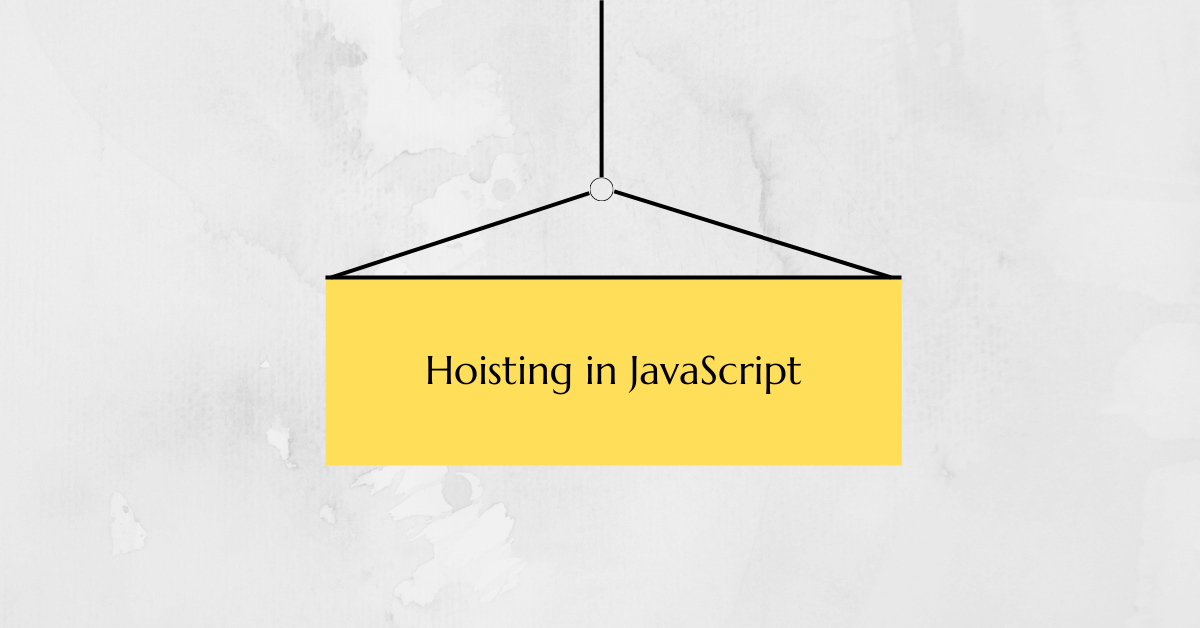Have you ever been puzzled by the behavior of your JavaScript code where you can access a variable or a function before it is even declared? Or have you ever wondered why you can declare a variable multiple times without any error in JavaScript? This is because of a mechanism called hoisting in JavaScript.
In this article, we will dive into the concept of hoisting in JavaScript, explore how it works, the benefits of hoisting, and what are the best practices for managing hoisting in your code
What is Hoisting in JavasScript?
Hoisting in JavaScript is a behavior that occurs during the compilation (or interpretation) phase of the code execution. It is a mechanism where function and variable declarations are moved to the top of their respective scope before the code is executed. This means that you can use a function or a variable before it is declared.
For example, consider the following code:
foo = 1;
console.log(foo);
var foo;=> we get 1, var foo is hoisted to the top then assign 1 and console.log, so we get 1
console.log(foo); // Output: undefined
var foo = 1;=> The foo variable is declared and assigned a value of 1 after it has been logged to the console. However, since variable declarations are hoisted to the top of their scope, the code above is equivalent to:
var foo;
console.log(foo); // Output: undefined
foo = 1;=> So, foo is declared at the top of its scope and assigned a value of undefined before the console.log() statement is executed.
var is hoisted to the top of its scope, let and const are not.
console.log(foo); // Output: ReferenceError: foo is not defined
let foo = 1;
In this example, we are using let to declare the foo variable. Unlike var, let does not hoist the variable to the top of the scope. Therefore, the console.log() statement throws a ReferenceError because foo has not been declared before it is used.
The Benefits of Hoisting
- By allowing variables and function declarations to be declared anywhere in your code, you can organize your code in a way that makes more sense to you and your team.
- Hoisting also helps to reduce the risk of errors caused by variable or function declarations being used before they are defined. By hoisting these declarations to the top of their respective scopes, JavaScript ensures that they are always available when they are needed.
Best Practices for Managing Hoisting in Your Code
- Always declare your variables and functions before you use them. While hoisting allows you to use a variable or function before it is declared, it is considered bad practice to rely on this behavior. Explicitly declaring your variables and functions at the beginning of their respective scopes makes your code more readable and easier to maintain.
- Avoid declaring variables and functions with the same name in the same scope. Since hoisting moves all variable and function declarations to the top of their respective scopes, declaring two variables or functions with the same name can cause unexpected behavior and errors.
- Use
letandconstinstead ofvarto declare variables. Whilevaris hoisted to the top of its scope,letandconstare not. This makes it easier to avoid unexpected behavior caused by hoisting. - Use function expressions instead of function declarations when possible. Unlike function declarations, function expressions are not hoisted to the top of their scope. This makes it easier to control the order in which your functions are executed, and can help to avoid unexpected behavior.

